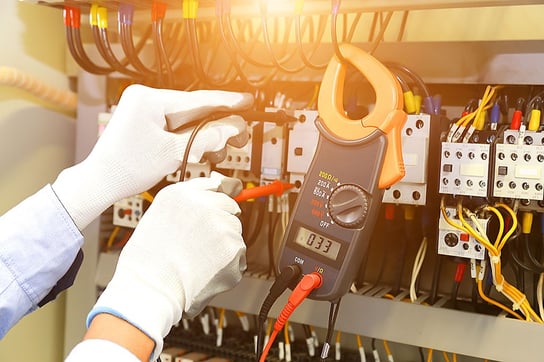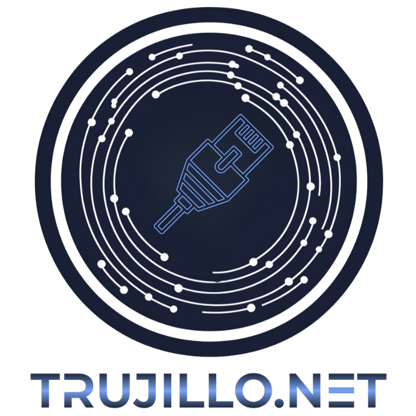Fiber vs. Low Voltage: Which Cabling Does Your Business Need?
Wired for performance and speed. Fiber or low voltage? We explain which one fits your business.
4/29/20255 min read


Understanding Cabling Types
Cabling is a crucial component of modern business infrastructure, facilitating everything from data transmission to powering devices. Two prominent types of cabling utilized in businesses today are fiber optics and low voltage cabling, each serving specific functions and offering distinct advantages. Understanding these cabling types can aid organizations in making informed decisions that align with their operational needs.
Fiber optic cabling employs strands of glass or plastic fibers to transmit data in the form of light. This technology enables significantly faster data rates and greater bandwidth compared to traditional copper cables. Fiber optics are also less susceptible to electromagnetic interference and signal degradation over long distances, making them ideal for businesses that require high-speed networking solutions. Their durability and high capacity render fiber optic cabling an optimal choice for data centers and enterprises looking to future-proof their connectivity infrastructure.
On the other hand, low voltage cabling encompasses various types of cables that carry voltage levels below 50 volts. Commonly used for voice, video, and data applications, low voltage cabling includes categories such as Category 5e (Cat5e), Category 6 (Cat6), and coaxial cables. It is widely adopted for its flexibility and cost-effectiveness, making it suitable for online communication systems and security cameras in retail and commercial environments. While low voltage cables may not match the speed and bandwidth capabilities of fiber optics, they serve critical functions in office environments where affordable performance is critical.
Ultimately, the choice between fiber optics and low voltage cabling depends on various factors, including budget, speed requirements, and the specific applications within an organization. Understanding the basic functionalities and key differences will empower businesses to select the appropriate cabling type that aligns with their operational dynamics and growth objectives.
Performance Comparison: Fiber Optics vs. Low Voltage
The choice between fiber optics and low voltage cabling can significantly impact the performance of a business's network infrastructure. Understanding the performance characteristics of both options is essential for making an informed decision that aligns with specific operational needs.
Fiber optics are characterized by their use of light signals to transmit data, which allows them to achieve remarkable speeds. Typically, fiber optic cables can deliver speeds ranging from 1 Gbps to 100 Gbps or more, making them ideal for data-heavy applications. Their extensive bandwidth capabilities enable businesses to handle large volumes of data with minimal latency. This makes fiber optics particularly suitable for organizations engaged in high-definition video streaming, large file transfers, and real-time data analytics.
In contrast, low voltage cabling, which often refers to copper cables such as Cat 5e, Cat 6, or Cat 6a, generally supports lower transmission speeds. These cables typically provide speeds up to 1 Gbps for shorter distances, and while they are adequate for standard business applications, performance may degrade over longer distances. Low voltage cabling is often sufficient for basic network services like web browsing, email, and standard video conferencing.
When considering data transmission distance, fiber optics hold a distinct advantage, as they can transmit data over several kilometers without signal loss, while low voltage cabling is limited to distances of 100 meters before signal degradation occurs. Additionally, fiber optics offer enhanced signal reliability and resistance to electromagnetic interference, making them a better choice for environments with electrical noise.
Ultimately, the performance comparisons suggest that fiber optic cabling excels in high-demand environments requiring high speed, bandwidth, and distance capabilities. Conversely, low voltage cabling may fulfill adequate performance requirements for basic connectivity in less demanding scenarios. Choosing between these options hinges on the specific needs of the business and the anticipated network load.
Use Cases and Recommendations
When it comes to selecting the appropriate cabling for a business, understanding specific use cases for fiber optics and low voltage cabling is essential. Each type of cabling offers unique benefits tailored to different scenarios, making it crucial for decision-makers to recognize these distinctions.
Fiber optic cabling is an optimal choice for businesses that demand high-speed data transmission and significant bandwidth, particularly in industries such as telecommunications, healthcare, and finance. For example, a hospital implementing advanced imaging technologies and electronic health records can significantly benefit from the rapid data transfer speeds of fiber optic cables. Similarly, financial institutions processing vast amounts of data in real-time can achieve enhanced operational efficiency with fiber optics, reducing latency and allowing for quicker transactions.
On the other hand, low voltage cabling, which encompasses options such as Cat5e, Cat6, and coaxial cable, is typically more suited for smaller businesses and those with less demanding data needs. Businesses in retail or small offices, for instance, may find low voltage cabling sufficient for their networks, allowing for reliable phone and internet connectivity without the complexities and costs associated with fiber optics. Additionally, low voltage systems may be easier to install and manage, making them a practical choice for businesses with limited IT resources.
For organizations looking to future-proof their infrastructure, fiber optic cabling is generally the more scalable solution, facilitating upgrades and growth without extensive reinstallation. Conversely, businesses with fixed data requirements may consider starting with low voltage options and potentially transitioning to fiber optics as their needs evolve. By assessing industry demands, current data requirements, and anticipated growth, decision-makers can make informed choices tailored to their business's unique needs.
Installation Considerations and Expectations
When organizations decide to implement either fiber optics or low voltage cabling, there are several installation considerations and expectations they must account for. The installation process can significantly differ between these two cabling solutions, impacting timelines, costs, and overall disruption to business operations. Understanding the nuances of each can help business owners to prepare adequately.
Professional installation is recommended for both fiber optics and low voltage cabling. Fiber optic installation requires specific expertise due to the delicate nature of the cables and the need for precise handling and connectors. The process typically involves measuring the necessary lengths, laying out the cabling pathway, and splicing fibers with a high degree of accuracy. Low voltage cabling, while generally less complex, still demands professional skills for proper configuration and to ensure compliance with local codes.
Potential challenges can arise during installation, including existing infrastructure limitations or unforeseen environmental factors. For instance, if a business operates in an older building, installing fiber optics may involve retrofitting walls or ceilings, which can extend the project timeline. Furthermore, issues such as accessibility of installation points and existing cabling conflicts can lead to additional costs or delays. It is always advisable to conduct a thorough site assessment prior to the installation to mitigate potential obstacles.
In terms of timeframes, fiber optic installations can take longer than low voltage installations, often due to the additional steps and precautions involved. Businesses should expect the installation process to last anywhere from a few days to several weeks, depending on the scale of the project and the complexity of the existing conditions. Cost is another vital factor—fiber optic cabling tends to be more expensive due to material costs and installation intricacies. As such, businesses should budget accordingly, factoring in not just the cabling expenses but also installation labor and potential disruptions to operations.
Subscribe To Newsletter Form
COPYRIGHT © 2025 Trujillonet LLC.
Phone number
Mon - Sat 7:00 AM - 6:00 PM
Hours
Follow Us On Social Media
Contact Us
